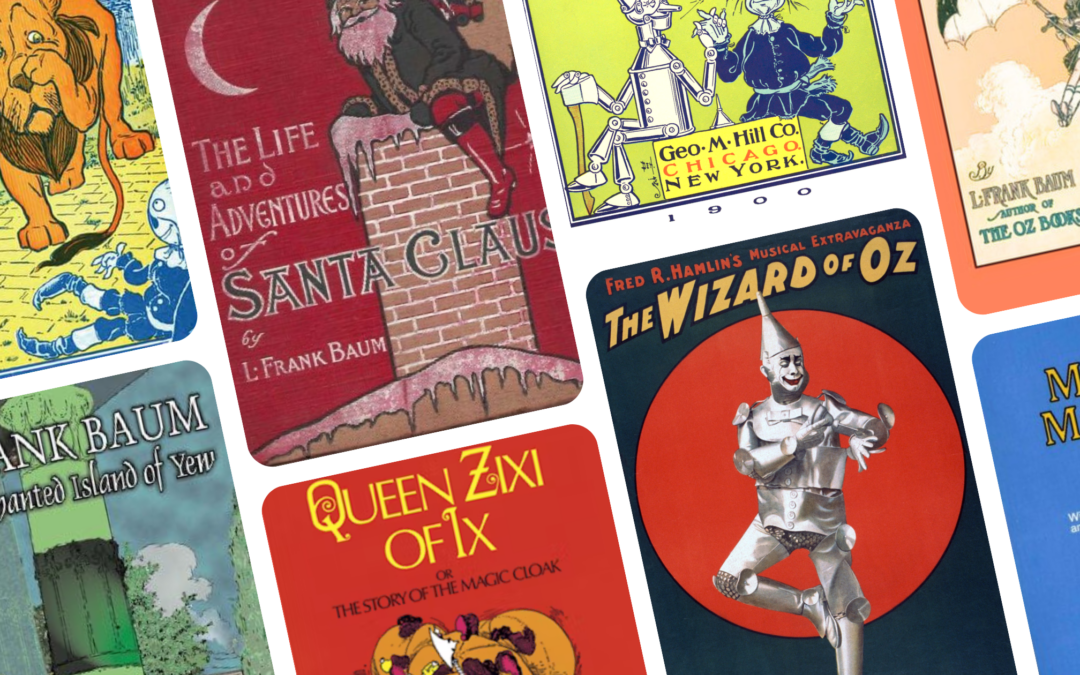Young Children’s Fantasy: The Works of L. Frank Baum
The Appeal of Fantasy Literature
Fantasy literature is a perennial favorite among children. In my two decades in the homeschooling world, I have seen Catholic homeschoolers embrace a variety of fantasy series, both high and low. Christopher Paolini’s Eragon, John Flanagan’s Ranger’s Apprentice, and Brian Jacques’ Redwall are some notable examples of high fantasy. And, of course, Tolkien’s Lord of the Rings and The Hobbit, as well as C.S. Lewis’s Narnia books, continue to resonate with new generations of Catholics every year.
As entertaining as these works are, they are generally not intended for elementary-age children. This is usually because the writing is simply over their heads. The exception is The Chronicles of Narnia. Most Catholic homeschoolers are already well-acquainted with Lewis and would benefit from more variety. So, where do you go if your seven-year-old is interested in fantasy chapter books but isn’t ready for Lord of the Rings?
Introducing L. Frank Baum to Young Readers
Here I’d like to recommend the works of L. Frank Baum, the famed author of The Wizard of Oz. Lyman Frank Baum (1856-1919) was an American author who had a long career in journalism and theater. While most of us know Baum for The Wizard of Oz, he was far more prolific. During his lifetime, he authored 14 Oz books, 41 other novels (not including four lost, unpublished novels), 83 short stories, over 200 poems, and at least 42 scripts. Many of these fall in the fantasy genre. As Baum’s works preceded the groundbreaking publication of Tolkien’s The Hobbit in 1937, they reflect an emerging fantasy genre. They were not influenced by the standard fantasy motifs that Tolkien established a few decades later.
Baum’s works are delightful. More to the point of this article, they were written at a level perfectly suited for very young children. I remember first encountering Baum’s novels when I was a young boy myself. Around the age of 8, I read his beautifully illustrated “Life and Adventures of Santa Claus” and fell in love with it. In fact, it is still one of my favorite classic chapter books for little kids. I went to my school library, which had the entire 14-book collection of Baum’s Oz books, and started reading.
Baum’s Style: Gentle Fantasy for Young Children
When my two youngest children asked me to read fantasy chapter books to them, the Oz books were my go-to choice. I started reading them aloud to my daughter when she was six. Now at age nine, she still enjoys cuddling up to listen to me read about the adventures of Dorothy, Ozma, Glinda, the Scarecrow, and the rest.
Baum deliberately wrote his books to be accessible to young children, and to that end, he kept them relatively free from violence. Indeed, one of the hallmarks of Oz is that nobody can die there; the inhabitants of Oz are all gifted with immortality.
He also wished to keep the stories free from what he considered “heavy” moralizing. Raised on the fairy tales of the Brothers Grimm and Hans Christian Andersen, Baum found them too dark and preachy. In response, he tried to keep his own stories light, replacing overt moralizing with basic ethical lessons—what we might call a Veggietales approach to morality—that he felt suited very young children. He also deliberately omitted romantic subplots, believing they were both uninteresting and incomprehensible to kids.
The results are colorful fantasy settings that are characterized by innocence and wonder, admirably suited to the tastes and comprehension of elementary school-age children.
Where to Start with the Oz Books
The Oz stories are a great place to begin. I read to my kids out of the anthologies published by Fall River Press. They have collected Baum’s 14 Oz books into three handy volumes:
- The Wizard of Oz (books 1-5)
- The Emerald City of Oz (books 6-10)
- The Magic of Oz (books 11-14)
They are solid, hardcover books, beautifully laid out with the original illustrations of W.W. Denslow.
It should be noted that there have been scores of Oz books published after Baum’s death in 1919, right up to the present day. A very few have been authorized by the Baum Trust that are considered “canon,” while the majority of others are not. For purposes of this article, I can only vouch for those fourteen Oz books authored by L. Frank Baum personally.
Beyond Oz: More Whimsy from Baum’s Imagination
Baum has many other works beyond the world of Oz. Above, I mentioned The Life and Adventures of Santa Claus, which I love to read to my kids during the holidays. Some of Baum’s other children’s novels include The Magical Monarch of Mo (1896), The Enchanted Island of Yew (1903), and Queen Zixi of Ix (1905). Many of Baum’s other fantasy works are what I would call “Oz adjacent,” that is, they exist in the same universe as Oz. However, they have no direct connection to the events and characters of the Oz books. For example, Queen Zixi of Ix takes place in a magical fairyland of Ix, far to the north of Oz.
Most of Baum’s other stories share a similar tone and content to the Oz books. I have always appreciated how delightfully outlandish some of the plots of these stories are. The Magical Monarch of Mo, for example, is about a king who gets his head bitten off by a purple dragon. The queen becomes angry with the king because she can no longer kiss him with no head, so the king promises one of his daughters in marriage to any man who can fashion him a new head, and so on.
A Perfect Fit for Read-Alouds and Early Chapter Book Reading
If you are looking for accessible chapter books for read-alouds with elementary age kids, I highly recommend the books by L. Frank Baum. They are time-tested, full of whimsy and wonder, and provide an age-appropriate introduction to the fantasy genre for young children.
Want to connect with other homeschoolers? Join us in the Homeschool Connections Facebook Group or in the HSC Community. I’d love to continue this conversation with you there.
NOTE: This article contains affiliate links.






